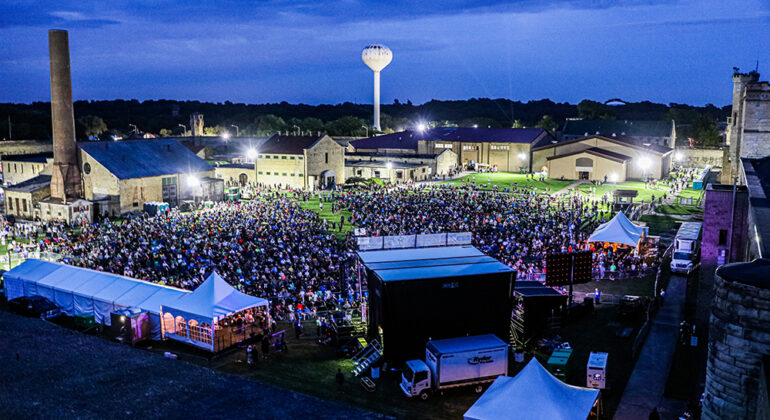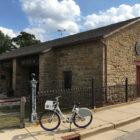by Nancy Uznanski
Even though many movies and shows were filmed at Old Joliet Prison, the image created in the 1980 movie “The Blues Brothers” stuck internationally, Peerbolte said. Although there always was interest in the high security prison, the movie created wider interest.
However in 2002, it was closed and prisoners were moved out. It did not open again until August of 2018.
The area for the prison was chosen partly because it had a limestone base, so prisoners could not dig their way out. With Collins Street on one side and the busy Illinois and Michigan (I&M) Canal and a railroad line that ran next to the canal on the other, it was also convenient. The I&M canal was a 96 mile long waterway that provided an economical method of transporting goods from the Great Lakes to the Gulf of Mexico when opened in 1848. Due to its importance in opening the Mid-west to trade, in 1984 it was designated the I&M Canal National Heritage Corridor.
“The prison operated from 1858 to 2002, and was one of the longest running prisons in the country,” Peerbolte said. “A way to think of it is that it was open before the Civil War until after the 9/11 attacks. When you consider how much American history there was during that period of time, it’s really stunning.”
Always intended to catch the public eye, Architect William W. Boyington, who also designed the Chicago Water Tower, designed it. His style, and the structure, were commanding. With high buff colored limestone walls, fancy turrets and stepped buttresses, it resembled a Medieval European castle complex, battlements and all.
“Called the Joliet Correctional Center, it was always an internationally famous penitentiary going all the way back to the 1800s”, Peerbolte said. “That was by design. A lot of wardens associated with the prison were up-and-coming politically. The position of warden of the Joliet Prison was a political appointment before the idea of criminology developed.”
When it opened, it was considered state-of-the-art. Sanitation was primitive, but it was not a consideration at that time. What it did have was small, but individual prison rooms! A grand apartment in the handsome administrative building was also included. There the warden and his family lived and entertained dignitaries and other guests.
Publicized around the world, people paid to take tours even then. Over time it became overcrowded and one of the roughest prisons in the country. Joliet accrued the nicknamed Prison City. But this prison also led innovations in terms of programs for prisoners, Peerbolte said. They started school programs and vocational education, as well as changes in criminal management and care.
During the time it was closed, vandalism ran wild. People would sneak in through holes in the gates, he said. Most were fairly harmless, but a couple of people got locked in old cells and several fires were set that destroyed buildings. Throughout that time, Peerbolte said the museum received calls almost daily, asking how to find the Blues Brothers Prison.
“The prison became an attractive nuisance,” he said. “In June of 2013, I started to see what could be done and it took five years of talking to and working with people to get the keys to get in.”
He credits two people in particular who helped make that happen.
“Quinn Adamowski, our Board President, gathered a small committee that engaged in fact finding. Soon from elected officials down to small groups who just wanted to help, people wer interested.”
Joliet Mayor Bob O’DeKirk advocated for them at the State level, he said. In 2017, they had a lease from the State, keys were handed over, and work began.
By August 2018, they had what they called The Great Prison Break-In event and tours began.
“We credit the men and women of the building trades in Joliet and Will County for stepping up and donating their labor and time to make prison tours here a safe experience, plus all the other volunteers who helped as well,” Peerbolte said. “It has been really rewarding to see the community step up, take back ownership, and continue to help.”
“The volunteers, have made this whole revitalization possible,” O’DeKirk said. “We’re really excited about what the future holds for the property.”
“They have done an amazing job on making this a part of their mission,” said Ana B. Koval President CEO I&M Canal Corridor Association.
Open from March through November, a look at the prison’s history is offered from guided adult and family friendly tours to a self-guided tour option.
Nancy Uznanski is a freelance writer.





